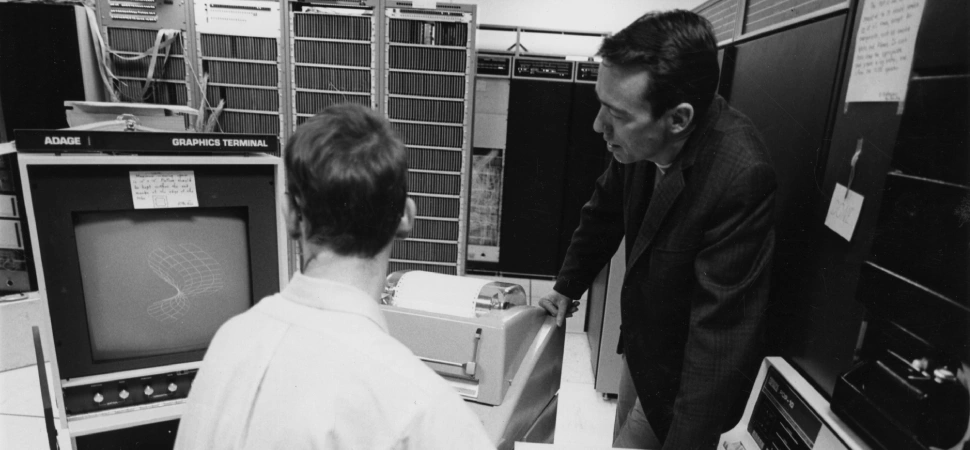On March 2, 1791, less than two years after the beginning of the French Revolution, the era of telecommunications officially began when Claude Chavet's optical telegraph sent a message from Parquet-sur-Sartre to Brulon in France. More than two centuries have passed since that day, but the desire that prompted this invention and all subsequent telecommunications inventions has remained the same: the desire to transmit signals over long distances instantaneously. Since 1791, optical communication systems have been replaced by wire telegraphs, telephones by cell phones, terrestrial television by cables and satellites, and eventually the Internet became a global network. One thing that has remained constant is the motive behind the desire to transmit information quickly: power. Since those who control information also control political power, communication almost immediately became a political issue.
A risky investment
For centuries, communications policy has been about ownership, control, and access to technical means of communication. Laying cables or installing telecommunications towers required risky investments, which could be made either by the state itself or by large companies. A return on investment was only possible if relative control and access to assets was maintained, so the state often had to intervene to change the balance of power underlying what we today call telecommunications regulation.
Today, as in the nineteenth century, development and innovation in the sector requires huge investment. This often means that those who came before - the incumbent operators - were able to capitalize on their foresight. Operators who wanted to compete were often unable to invest in their own cables, towers, satellites and other equipment, but had to lobby for access to existing networks. Even if they could build their own networks, they worried about whether the incumbent operator would allow them to integrate with the rest of the network, and in the case of monopolies, consumers worried about whether universal or basic services could be provided at a low enough price. All of this ultimately raised issues of privacy and national security. As we will see below, telecommunications were poorly regulated until the 1980s, when there was a shift from fighting "natural" monopolies to deregulation and demonopolization, a model of regulation that persists today.
Monopolies
Telecommunications monopolies have a significant impact not only on consumers and businesses, but also on the global economic position of countries. Countries and regions that have succeeded in eliminating or weakening existing monopolies often benefit from faster and more reliable next-generation networks. However, this path is not without trade-offs: monopolies often make sense because they can serve an entire market more efficiently than a few companies or governments - monopolies can do what no one else can. This is the main reason why competition regulation is at the heart of any regulation of the telecommunications sector.

The struggle for Internet governance
With the emergence of the Internet in the 1990s and its transformation into a global communications medium in the 2000s, telecommunications regulation has become more political, more complex to understand and more important than ever. De Nardis writes in a 2014 study that the struggle over Internet governance is the new field of political and economic power in the twenty-first century. The order of technical structure is the order of power. Those who influence the medium have power over the social order. Understanding the dynamics of global power requires understanding the dynamics of telecommunications regulation. Telecommunications regulation has never been as complex and uncertain as it is today, and telecommunications companies with traditional businesses (voice, messaging, and television) have never faced as much competition as they do today, while alternative business models on the Internet (VoIP, instant messaging, and television on demand) are thriving.
Today, the political and public debate over telecommunications rages on, with opinions being expressed mostly on issues as diverse as broadband access, cell phone rates, and net neutrality. In fact, understanding the telecommunications legislative process has always been difficult: telecommunications policy is often developed over years and changes only gradually, and the public (and sometimes legislators themselves) are not well versed in the meaning of technical terms and the implications of specific legislative decisions.
Telecommunications challenges
In the European context, there are a number of specific challenges that make it difficult to understand Internet regulatory policy:
1. Two levels of regulation
The modern Internet is divided into two levels of regulation. The first tier regulates the transmission medium - the cables that carry signals - and the second tier regulates the content - the material transmitted over the cables. The first tier has traditionally been governed by legislation known as telecommunications law, and the second tier by media and e-commerce law. But while this separation made sense 20 years ago, today it no longer does, and there are increasing calls for more flexible legislation. Instead of telephone lines for voice calls and internet lines for data and broadcast signals, increasingly all services are offered exclusively online. However, existing laws and the policy processes underpinning them are still largely operating under an outdated regulatory model: pre-convergence laws and regulations must be adapted to the realities of new telecommunications convergence models. Organizational hierarchies are political and valuable in terms of structure and influence: internet hierarchies are orders of power, even if they are technical. As Dinardis argues, a change in the structure underlying the Internet means a change in the politics generated; in other words, online communication influences and is influenced by the political process.
2. Shifting mindsets
The rapidly changing, normative and distributed reality of modern communication requires a more effective regulatory model than those developed for older technologies. Traditional regulatory models have been readily adapted to particular technologies such as telephone, telegraph, and linear television. The policy processes that affect telecommunications companies and the authorities that implement them are a product of old technologies and traditional thinking. In a world characterized by the convergence of technologies and services, this no longer makes sense.
The EU recognized this problem very early on, as evidenced by the fact that it allowed sectoral regulation and competition law and a combination of liberalization and harmonization in this area. Recent studies have confirmed the call for simplification of two systems: for digital networks and the services provided through them.
Another reason for the current difficulties is the division of competences between regulatory authorities. Telecommunications are regulated at national level, mainly in individual countries, but they are also subject to various international standards and sometimes even rules. At the European level, this means that telecommunications are subject to two regimes: national and European.

3. Telecommunications law
There is no single European law covering the entire telecommunications sector, and the development and application of rules is divided between Member States and the EU, requiring political consensus and close coordination. The processes that shape and influence modern telecommunications are fundamentally global. Not only is the telecommunications industry increasingly global, but the infrastructure is shared and often requires cooperation between several countries. As a result, telecommunications regulatory policy is becoming increasingly global.
Implications
A direct consequence is the complex interplay between European, international and national issues with obvious implications for the institutional structures overseeing their implementation, which are often fragmented, fragmented and sometimes contradictory. There is no single EU institution overseeing the implementation of EU legislation. At the beginning of the liberalization process, this fragmentation led to conflicts over competences. Fierce battles were fought in the courts, and national and EU institutions rarely intervened. Today, national regulators are the institutional center. But the problem is much more complex. With so much legislation at different levels and so many international organizations competing for jurisdiction, modern telecommunications is essentially the result of institutional compromise.
The old world of telecommunications was a world of regulation, where national governments made the rules. The new world of telecommunications is a world of governance, where networks are not only no longer regulated, but are governed by different actors at different levels. The new reality in telecommunications is that national regulation is only part of the story. Large multinational companies can make decisions that directly impact the entire world. It is often unclear to what extent these companies may be subject to national laws and how legislation in one major region may affect other regions.




Comments